
views
Soothing Your Skin
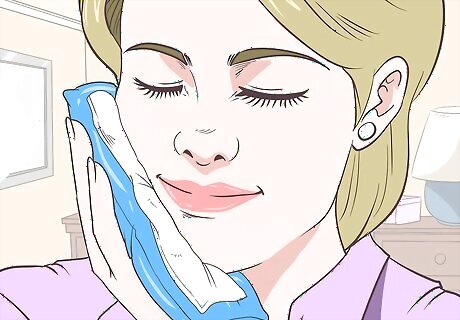
Use a cool compress. Applying a cool compress to your face may help to relieve itching and help to soothe your rash. To use a cool compress, hold a clean cotton washcloth under cold running water until it is saturated. Then, wring out the washcloth and place the cloth over your face. If the rash is in one area, you can fold the washcloth and apply it to that area. Repeat this process as needed throughout the day. Do not allow anyone else to use the washcloth just in case your rash is contagious. Heat can make a rash worse and increase irritation — stick to cool water, decreasing inflammation.
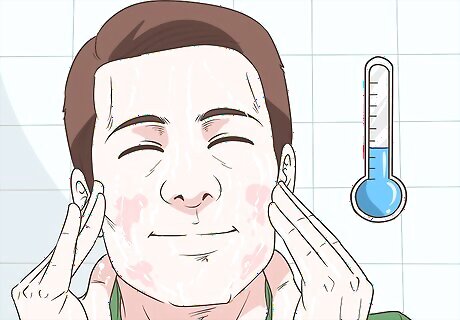
Rinse your skin with cool water. Splashing some cool water on your face may also help to relieve a rash. Turn on the cold water and adjust so that the water is cool but not freezing. Then, lean over the sink with your eyes closed and splash cool water on your face a few times. Pat dry your face with a clean, dry towel after you are done. Repeat this process as needed throughout the day. You may also want to use a small amount of a gentle cleanser to remove any makeup, or other products that you think may have caused your rash. Pay particular attention to products you may have just started using recently. Do not scrub your face. Scrubbing may cause the rash to spread and become more intense.
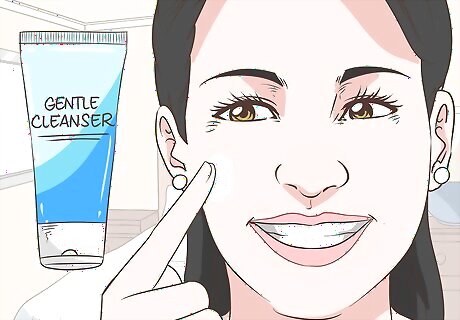
Go without makeup and other facial products for a few days. To rule out cosmetics or other products as the cause of your rash, you may want to stop using any makeup, creams, lotions, serums, or other chemicals until your rash clears. Stick to a gentle cleanser, such as Cetaphil, or use water to wash your face for a few days. Do not apply any moisturizers or other products after you wash.
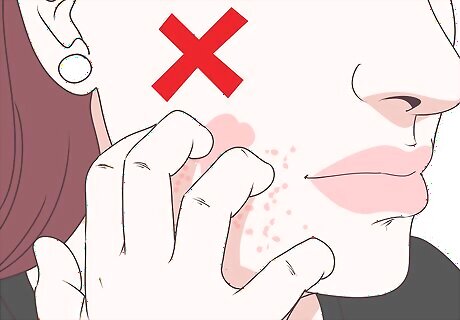
Try not to touch or scratch your face. Touching, scratching, and picking the rash can make your rash worse, and it will also increase the chances that you may spread it to someone else if it is contagious. Keep your hands away from your face and don't rub or itch your face with other things either.
Using Natural Remedies
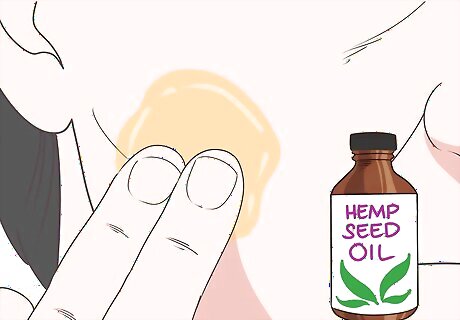
Smooth on a bit of hemp seed oil. Hemp seed oil may relieve itching and help to moisturize dry rashes. Try putting a few drops of hemp seed oil on your fingertips and smoothing the hemp seed oil over your face. Do this twice per day after washing your face. Test the hemp seed oil on the inside of your elbow before putting it on your face to make sure you don't have a reaction, which will only make your rash worse. Make sure that you wash your hands after touching your face to prevent spreading the rash.
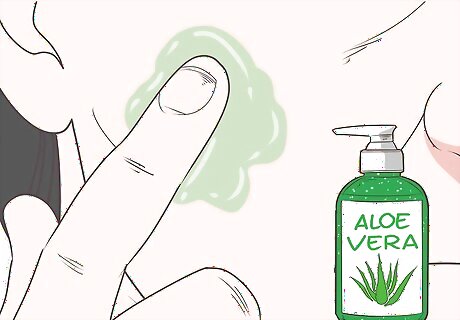
Apply aloe vera gel. Aloe vera gel has antibacterial properties, and it can help to soothe a rash. Try applying a thin layer of aloe vera gel to your face. Allow the aloe vera to dry on your face. Repeat this process a couple of times per day. Remember to wash your hands after applying the aloe vera gel.

Use colloidal oatmeal. Colloidal oatmeal baths can help to soothe a rash on your body, but you may also use colloidal oatmeal on your face. You can purchase colloidal oatmeal in a drug store. Try adding a couple of tablespoons of colloidal oatmeal to a bowl of warm water, then dip a clean cotton washcloth in the solution. Use the washcloth to gently dab colloidal oatmeal water on your face. Leave the oatmeal solution on your face for a few minutes, then rinse your face with lukewarm water. Repeat this process a few times per day until your rash clears.

Create an herbal compress. Some herbs have soothing properties that may also help to get rid of a rash on your face. To use soothing herbs, try brewing a tea and using it instead of water for a cool compress. Measure out a teaspoon of goldenseal, calendula, and Echinacea. Place the herbs in a mug and pour boiling water over them. Allow the herbs to steep for about five minutes. Then, strain the herbs out of the tea. Let the water cool down to room temperature or place in the refrigerator for about an hour to chill the solution. Dip a clean cotton washcloth in the solution, wring out the excess and apply the compress to your face for about five to 10 minutes. Repeat this process twice daily. If the rash worsens with any topical "natural" remedies, discontinue use. Sometimes, the more things are placed on top of rash, the worse it can get.
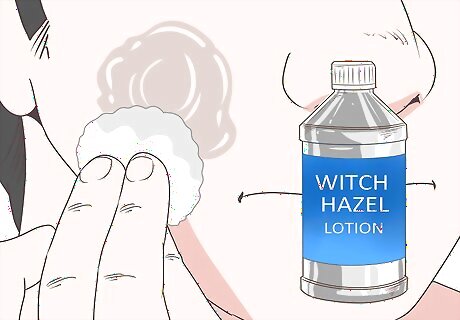
Use a witch hazel toner and follow it with a coconut oil moisturizer. Dip a cotton ball in with hazel. Then, rub the soaked cotton ball on your face. This will wipe witch hazel over your skin, and this may provide a soothing effect. After you do this, apply coconut oil to your face to rehydrate it. This may also help to soothe your skin. You can purchase witch hazel on its own or get a toner made from mostly or only witch hazel. You can find coconut oil with the other cooking oils in grocery stores. Choose unrefined, extra virgin olive oil.
Seeking Medical Help
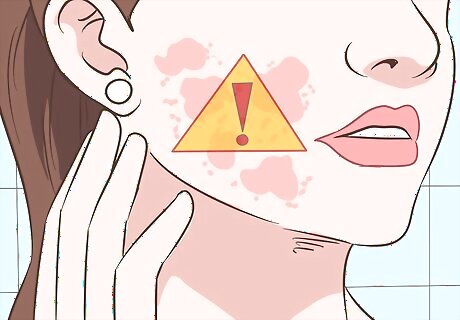
Seek immediate medical attention for a rash with severe symptoms. In some cases, a rash may be a symptom of a severe allergic reaction that requires immediate medical attention. Call emergency services (911) if you have a rash that is accompanied by: Shortness of breath or trouble breathing Tightness in your throat and/or difficulty swallowing Swollen face Purplish, bruise-like color Hives

See your doctor if your rash does not improve within two days. Rashes often go away on their own, but they can also indicate a problem that needs to be treated. If your rash does not improve within a couple of days, then call your doctor. If you are on medication or have started a new medication, call your physician right away. Your rash may be a side effect of the medication. Do not stop taking your medication unless your physician says to do so or if you have severe symptoms (in which case you should seek immediate emergency care). Keep in mind that there are many different types of rashes and many causes of rashes as well. Your doctor can help you determine what has caused your rash and find the best way to treat it and prevent it from happening in the future.
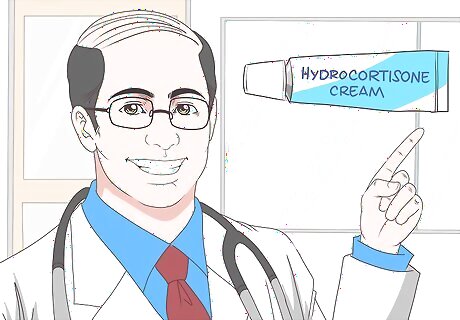
Ask your doctor about using hydrocortisone cream. Hydrocortisone cream is available without a prescription, and it may help relieve a rash on your face. However, you should not apply hydrocortisone cream to the sensitive skin on your face without asking your doctor first. Cortisone creams come in different strengths and are recommended for short-term use, as they can thin skin surfaces.

Take an antihistamine. Some rashes may be due to allergies, so taking an antihistamine may help. Talk to your doctor first to see if taking an antihistamine may help you. If your rash is itchy, consider taking an antihistamine such as: Fexofenadine (Allegra) Loratadine (Claritin) Diphenhydramine (Benadryl) Cetirizine dihydrochloride (Zyrtec)

Apply some antibiotic cream. Pus-filled pimples can accompany some types of rashes, and these can become infected. If you have a pus-filled, pimple-like rash, you may consider using a topical antibacterial cream. Ask your doctor if this is a good option for your rash. Make sure that your readers and follow the manufacturer's instructions as well. Your physician may prescribe a topical antibiotic cream such as mupirocin (Bactroban) for a more severe skin infection. Keep in mind that there are no topical creams or ointments made for viral rashes. This type of rash often resolves on its own. Topical creams that contain clotrimazole(Lotrimin) may also treat fungal rashes. Your doctor may be able to tell you if your rash is fungal.










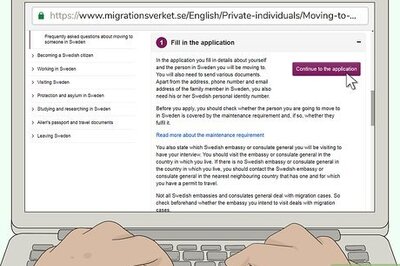

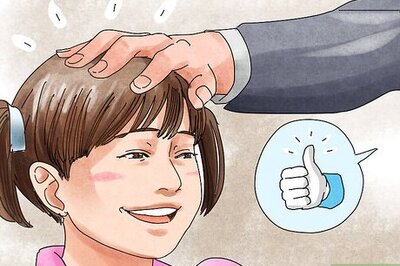







Comments
0 comment